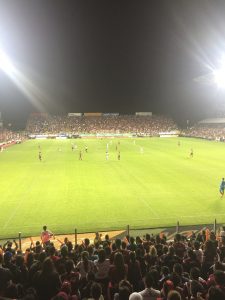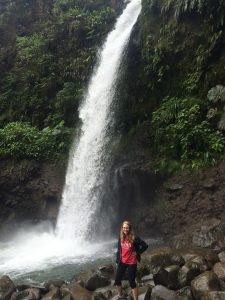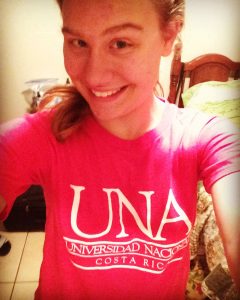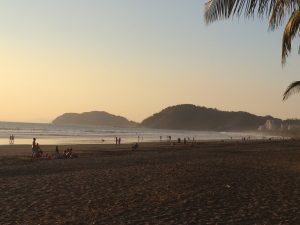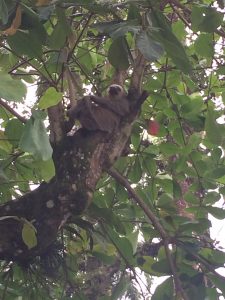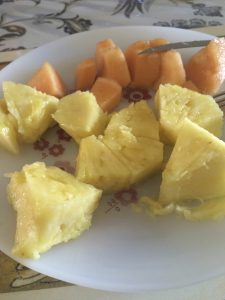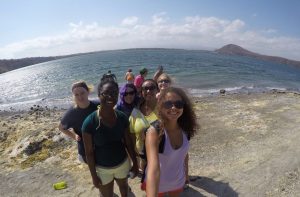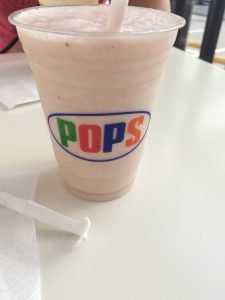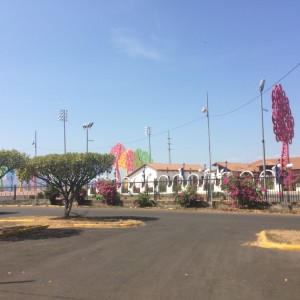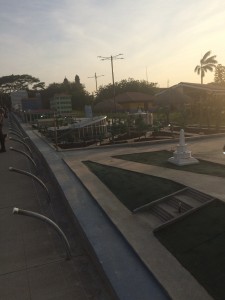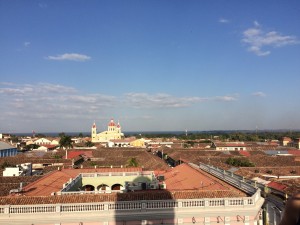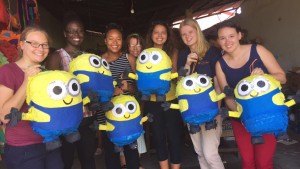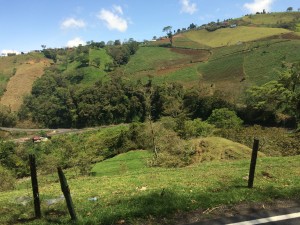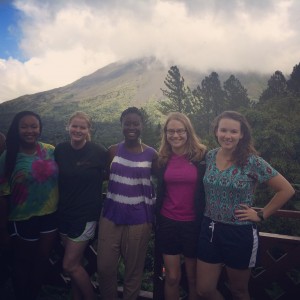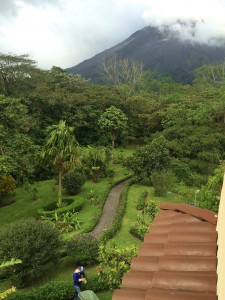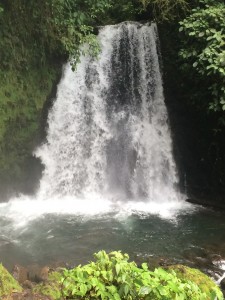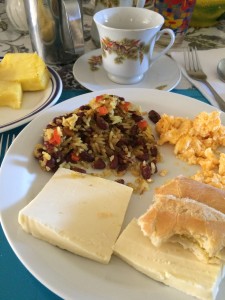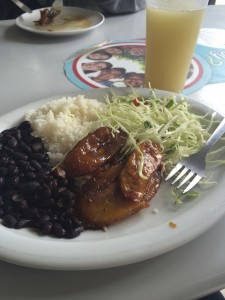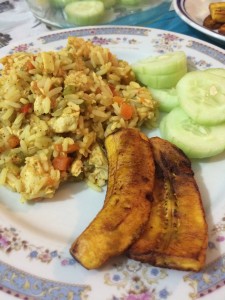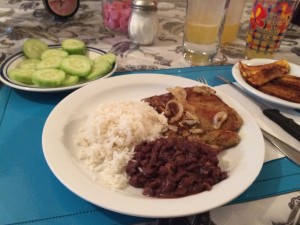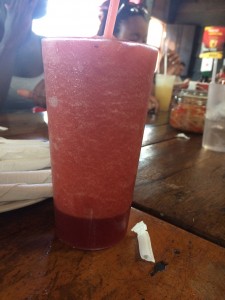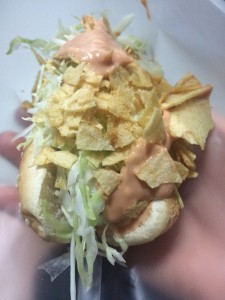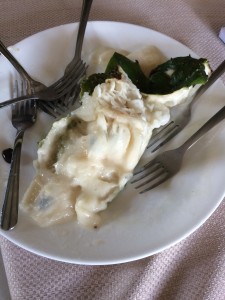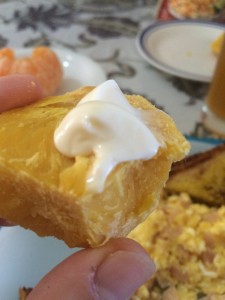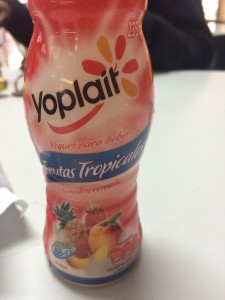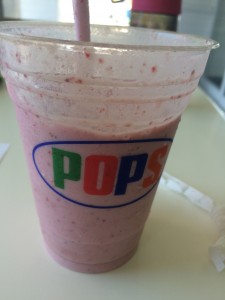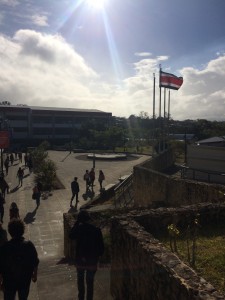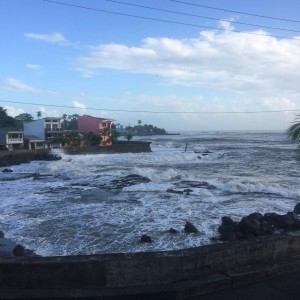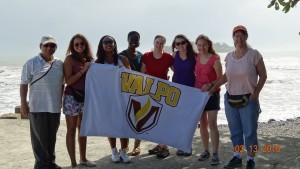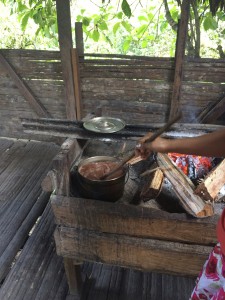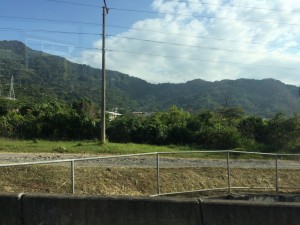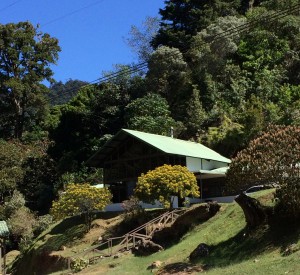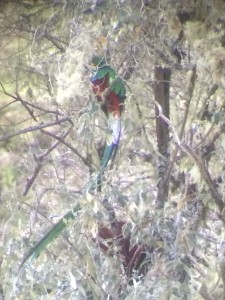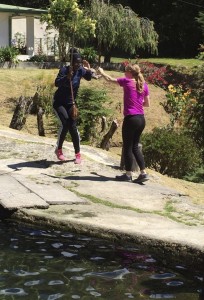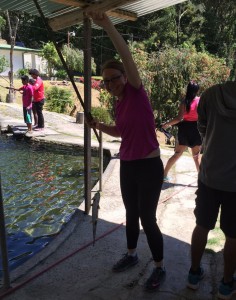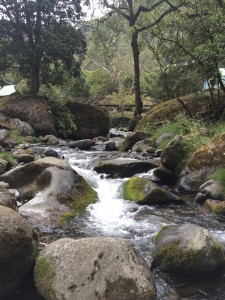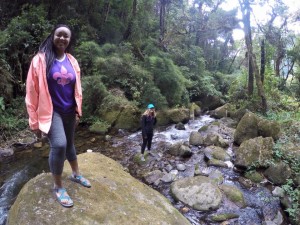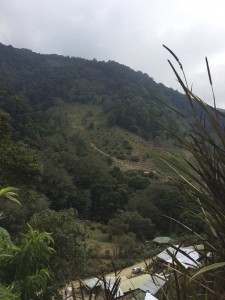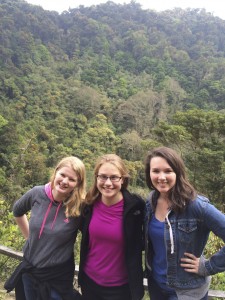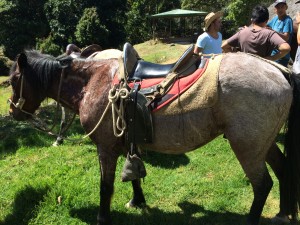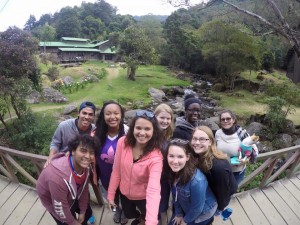I’m ready to go home. Not because I’m sick of Costa Rica or because the last four months have been horrible. In fact, it’s the opposite. I want to go home because I have absolutely loved Costa Rica. Because I can’t wait to tell everyone about all the crazy adventures I’ve been on and incredible sights I’ve seen and the million things I’ve learned. Because I have lived these four months to the fullest, and it’s time to move on. Part of what makes studying abroad so sweet is the fact that it’s so short. We try to pack in as much as we can into four months, when really we are only scratching the surface of learning about another culture and way of life. Saying goodbye to Costa Rica will truly be bittersweet.
This last week in Costa Rica has been pretty calm. We have ended our internships and classes, so we have had a lot of free time to hang out and enjoy our last days here. One thing we decided to do was go to a soccer (fútbol) game. It was a really big semifinal game, so the atmosphere was crazy. There was constant cheering and yelling, and I’m pretty sure I got my fill of Spanish curse words for the whole semester. It was a really fun cultural experience, though, and very different than any sporting event I have attended in the United States!
The stadium was full!
Another thing we got to do our last week here was take a trip to Poas volcano. Unfortunately, it was too cloudy to see the volcano, but we got a very scenic drive and got to see a pretty waterfall. It was still a fun way to be together and say goodbye to one of the best things about Costa Rica—the nature.
The waterfall was huge!
This week was one of goodbyes. People who were total strangers four months ago are suddenly close friends. I not only have my host family to say goodbye to—but ALL of the host families. They all made me feel just as welcome in their homes as their own students. Part of what made my study abroad experience so unique was not only being welcomed into one home, but into a community.
Goodbyes are never easy. I have never quite gotten over how strange it feels to say goodbye to someone knowing very well I may never see them again. Or walking around a new neighborhood that feels like home for the last time. But what comforts me most is knowing that it is time to leave. That after this I will be moving on to bigger and better things. This semester I accomplished far more than I ever thought I was capable of and learned more than I could have ever imagined. It’s going to be hard to adjust back to life in the United States and to adequately sum up my feelings about this experience. So please be patient with me, friends and family. I will be different but I will learn how to live back in the States again. These four months have been phenomenal. But it’s time to go home.
